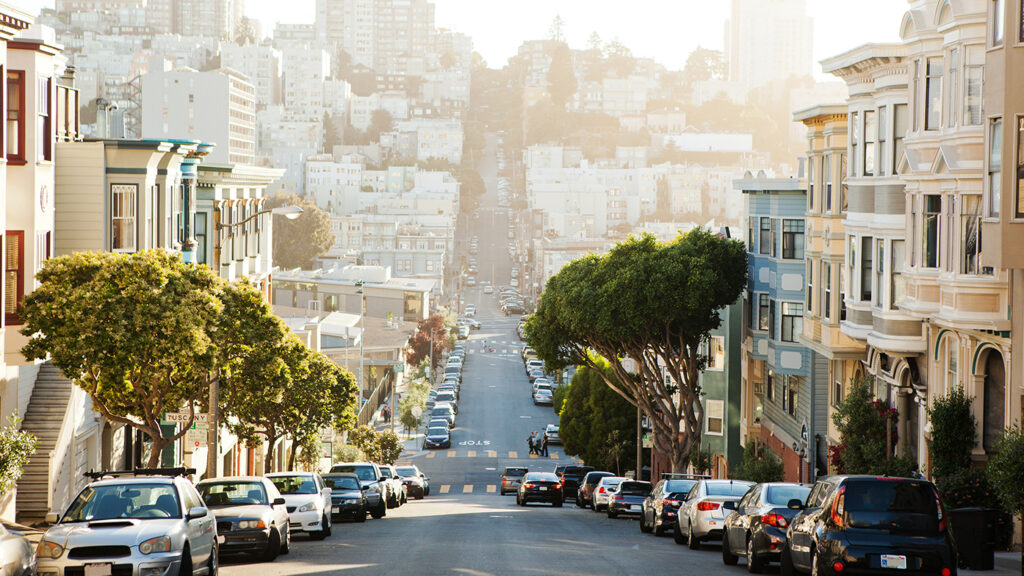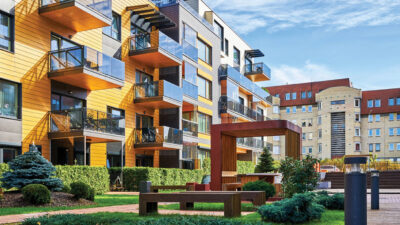Apartment Rents
To fully understand what is currently happening in the world of San Francisco multifamily investment sales, we track the nuances of the apartment rental market. Average asking rents in San Francisco have increased for the last seven consecutive quarters, according to the REIS Metro Executive Briefing Apartment 3rd Quarter 2018 Metro: San Francisco report. The three most expensive neighborhoods for rents in San Francisco as of March 2019 were as follows, in monthly figures:
- Financial District: 1-Bedroom: $4,200, 2-Bedroom: $5,495
- SOMA: 1-Bedroom: $3,537; 2-Bedroom: $4,455
- Pacific Heights: 1-Bedroom: $3,495; 2-Bedroom: $4,900.
These statistics are median rents in San Francisco and include apartments that are rent-controlled, non-rent controlled and new construction.
Building Sales
Next, to summarize the state of the multifamily sales market in San Francisco, we looked at the effects of what the increase in the cost of borrowing had in 2018 in terms of what buyers could pay. Legislation and the potential repeal of The Costa Hawkins Act—which was ultimately defeated in November 2018—affected investor demand. The Costa Hawkins Act is a California law that limits the ability of cities to impose rent control regulations—and the measure to repeal it has certainly impacted the marketplace. We’ve seen a change in the last six months in what buyers are willing to offer, and they are pushing back on sellers. While 2018 was a productive year, with 95 buildings in the 10+ unit range sold, and December finished strong, we have seen fewer trades in January, February and March of 2019 than we normally see on a monthly basis. Properties are staying on the market for longer, but we believe that this will improve as we move into Q2 2019.
Construction, Absorption and Vacancy
San Francisco currently has an inventory of 6,069 multifamily buildings in the 5-50 unit range, totaling 69,945 units. The current vacancy rate in this product type is 3.4%, down 0.6% year-over-year, and there are 15 buildings under construction in the 5-50 unit size range, with 498 units under construction. In 2019 and 2020 throughout the city and across all unit ranges for multifamily buildings, 4,286 residential units are projected to deliver. So what does this mean for San Francisco?
In 2012, San Francisco became the most expensive metro in the country for renters, eclipsing the New York metro area, according to CoStar’s Multi-Family Market Report of the 2018 San Francisco Market. From 2012 to 2015, we witnessed staggering rental rate increases per year, as asking rents grew 9.5% per year on average. While there may be an inefficient apartment supply in San Francisco now with rents still increasing, the delivery of 4,286 units between 2019 and 2020 will increase the total market vacancy rate to 5.0% in 2020, due to the rate of the absorption of the units and the fact that household formation will be slower than the rate of delivery of the units. Therefore, research firm Reis predicts that the vacancy rate will remain moderate and rents will continue to increase over the next five years, but not at the extreme rates we saw from 2012-2015.
However, there have been many tech leases signed in the San Francisco office market over 100,000 square feet, both recently and over the last couple of years, that are transforming the market’s job growth, bringing in new employees and potential renters. While some of the projects haven’t been delivered yet, when they reach completion we will see an even greater change in our working population. Examples of large office leases include Facebook at Park Tower (755,900 SF), Dropbox at 250 Howard Street (736,000 SF), and most recently Google at 1 Market Street (253,000 SF).
The market for large blocks of office space has been tight, and tech tenants have been competing to secure leases for projects that are still only in development phases. Pinterest, who is planning to go public, just signed a deal for 490,000 square feet at 88 Bluxome Street, the largest office lease thus far for 2019. Salesforce, which occupied Salesforce Tower at 415 Mission Street last year, is San Francisco’s largest tech tenant, who in November 2018 pre-leased 325,000 square feet at 550 Howard Street. This will be the last large skyscraper in the Transbay area. Uber is San Francisco’s second largest tech tenant, who now currently leases or owns 1.7 million square feet of real estate in the city. Uber has four office buildings set to open in early 2020 that total 1 million square feet. There was a total of 11.9 million square feet of office leases signed in 2018 alone, which translates to space for roughly 80,000 employees. These large-scale occupiers of office space could cause the apartment vacancy rate to drop yet again.
Economic Forecast
Looking at a national scope, inflation has become more controlled, with year-over-year inflation declining to 1.9% in December 2018, down from its peak at 2.9% in July 2018. In February, the Fed paused its planned rate hikes, and therefore investments in business and consumer spending are expected to continue at higher levels versus if interest rates had continued to rise. This pause should help to prevent a major downturn.
While we may face a market correction, we are not headed toward a major recession in the near term. Interest rates are back down to previous levels, and the same is true for the 10 Year Treasury (2.428% as of March 25, 2019), which means good news is on the horizon for multifamily real estate. We have robust job growth locally and nationally, and the Bay Area technology sector is increasingly strong. Bob Karr, CEO of Link Silicon Valley, stated that in 2018 there were 75 Bay Area tech companies who received $100 million or more of investor funding in comparison to a yearly average of 42 from 2014 to 2017.
To speak more specifically to the San Francisco multifamily market and outlook, the current high cost of purchasing a home and the low housing affordability in San Francisco creates a greater demand for rental apartments. As of Q3 2018, only 15% of residents could afford to purchase a home in San Francisco (thus, 85% are renters). While the cost of housing in San Francisco is already among the most expensive in the country, news of companies like Uber, Pinterest, Airbnb and Slack expecting to go public in 2019 has some estimating that there will be overnight millionaires investing in real estate, and that home prices will be driven up even further.
We’re looking forward to reporting next quarter on what new trends have occurred, especially as it relates to cap rates, GRMs, sale prices and interest rates in the San Francisco market. In the meantime, please contact us if you are interested in further market information or representation.

 Colliers Insights Team
Colliers Insights Team

 Aaron Jodka
Aaron Jodka
